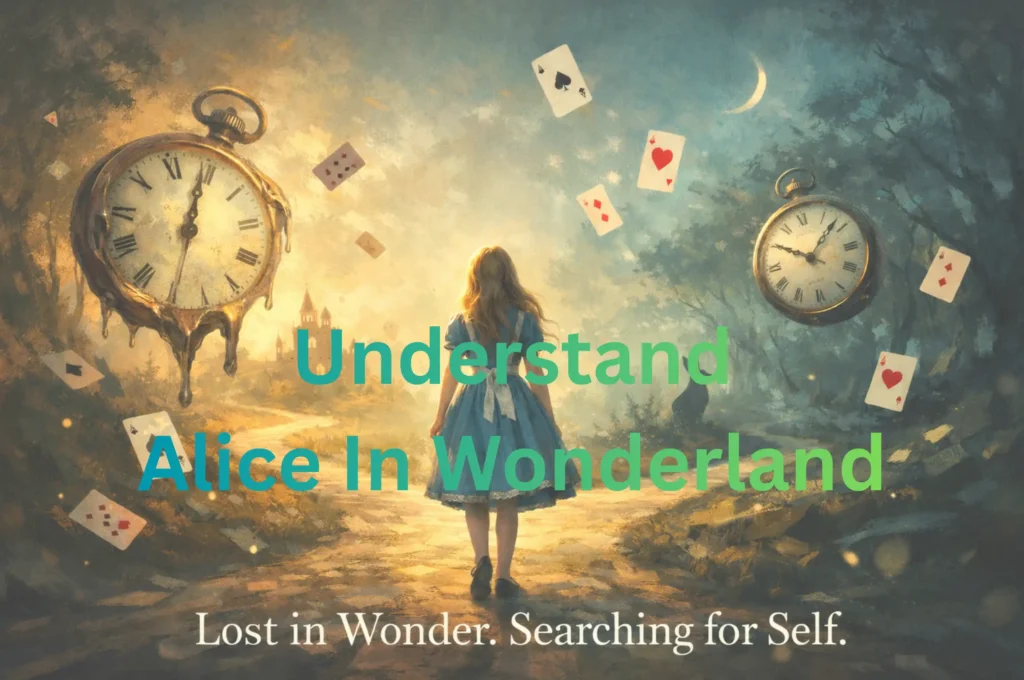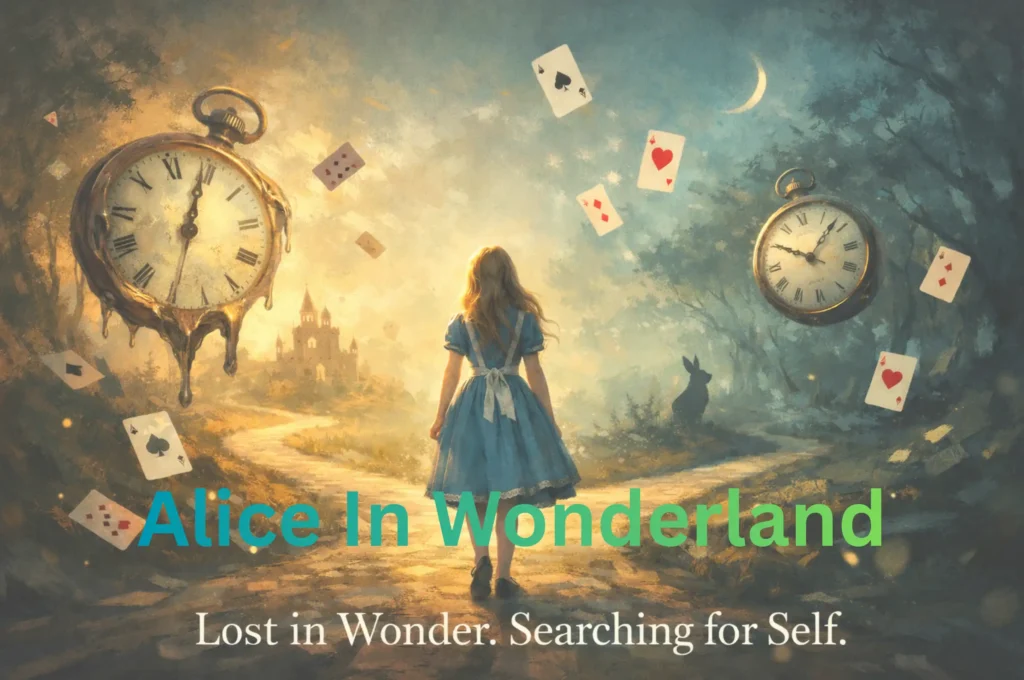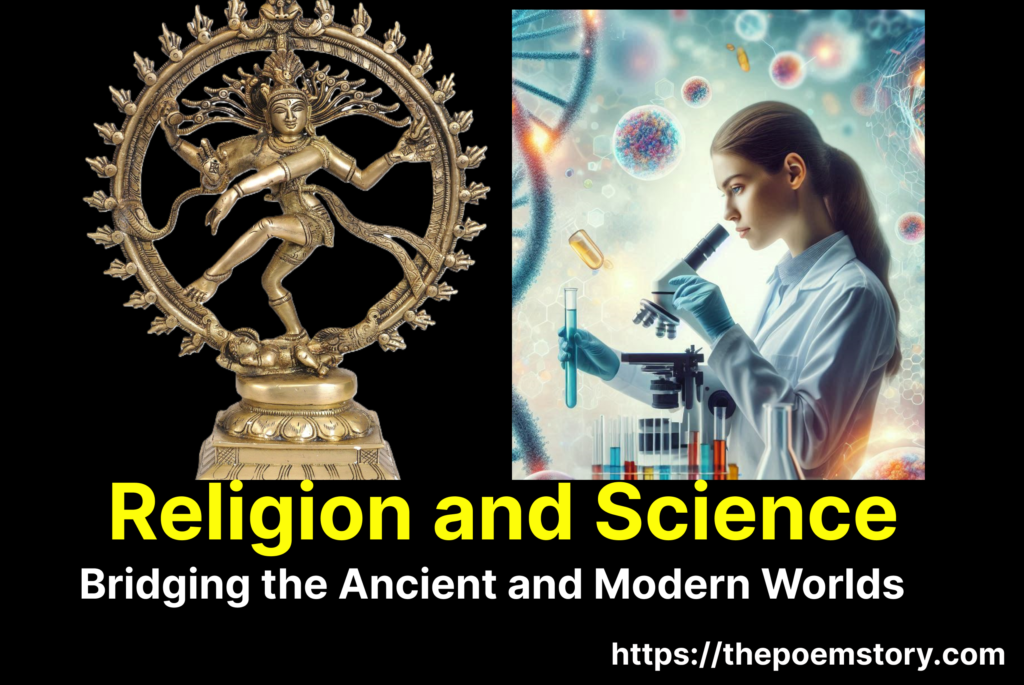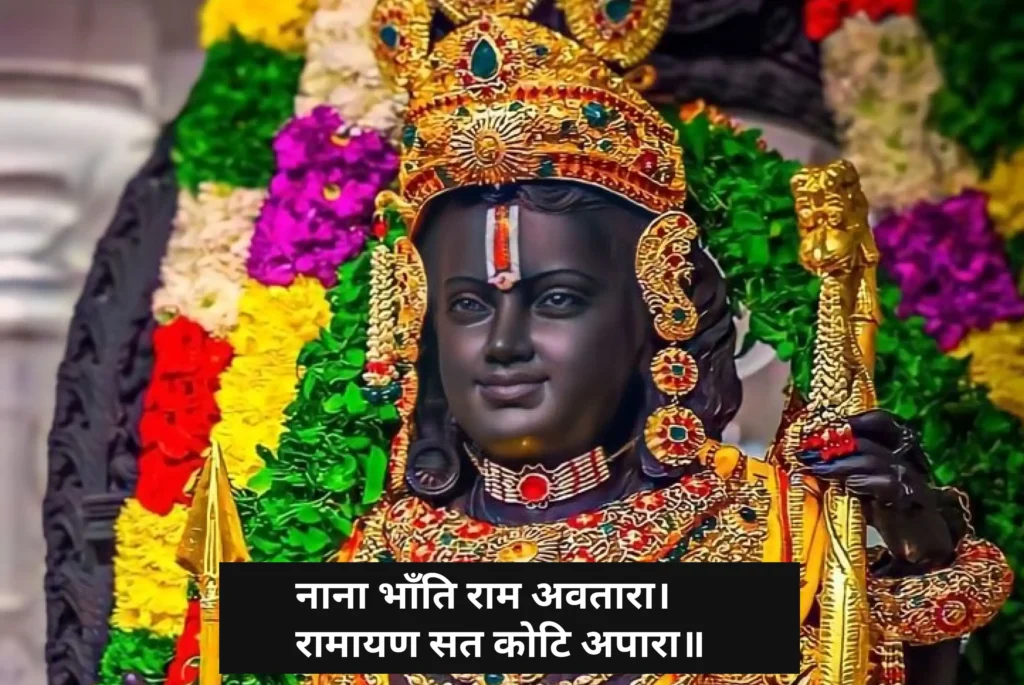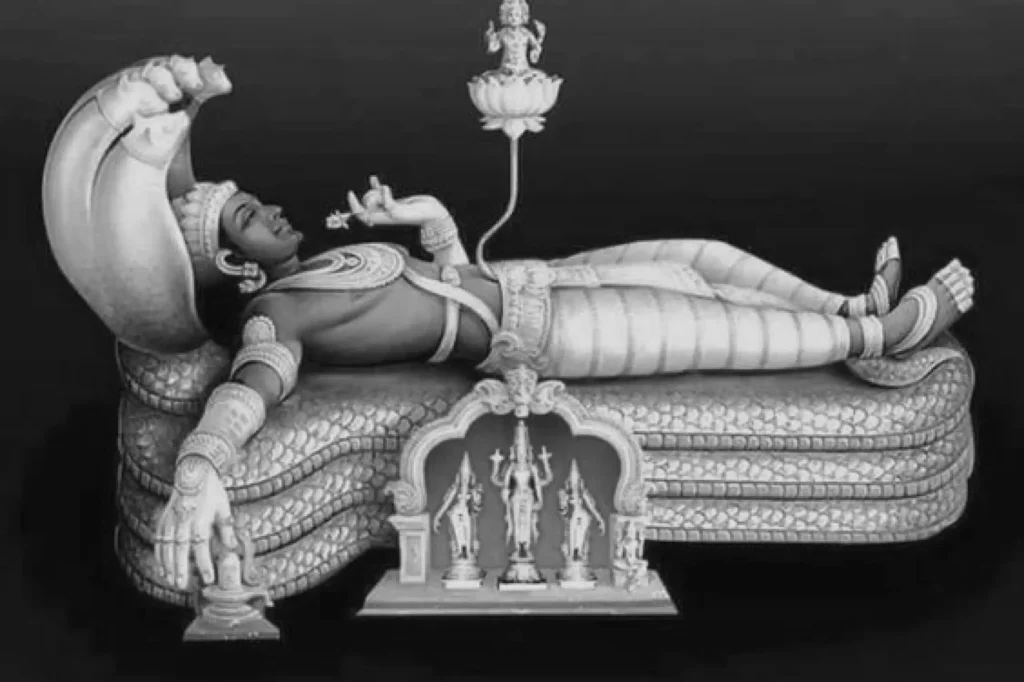Introduction to Abhigyan Shakuntalam
‘Abhigyan Shakuntalam,’ often translated as ‘The Recognition of Shakuntala,’ is a seminal work by the celebrated ancient Indian poet Kalidasa. This classical Sanskrit play is regarded as one of the greatest masterpieces in Indian literature, embodying the quintessence of poetic expression and dramatic art. Kalidasa, revered as one of India’s finest literary figures, has managed to create a timeless narrative that resonates with audiences even today.
The play captures the enchanting love story between King Dushyanta and Shakuntala, weaving together themes of love, memory, and destiny. King Dushyanta, a valiant and noble ruler, encounters Shakuntala, a beautiful and virtuous maiden, in the hermitage of Sage Kanva. Their meeting, sparked by fate and nurtured by mutual affection, sets the stage for a romance that transcends the ordinary.
Shakuntala is depicted as a paragon of grace and purity, the daughter of Sage Vishwamitra and the celestial nymph Menaka. Raised in the tranquil hermitage, she is imbued with simplicity and natural charm. King Dushyanta, captivated by her beauty and innocence, falls deeply in love with her. The narrative unfolds with their secret marriage and subsequent separation, driven by a curse that causes Dushyanta to forget Shakuntala until he sees a token of their love.
The significance of ‘Abhigyan Shakuntalam’ in Indian literature is profound. It not only exemplifies the highest standards of poetic and dramatic genius but also reflects the cultural and philosophical ethos of ancient India. The themes explored in the play, such as the power of love and the inevitability of destiny, continue to find relevance in contemporary times. As we delve deeper into the story, we witness the intricate interplay of human emotions and divine interventions, making ‘Abhigyan Shakuntalam’ an enduring tale of love and memory.
Love Story of Dushyant and Shakuntala
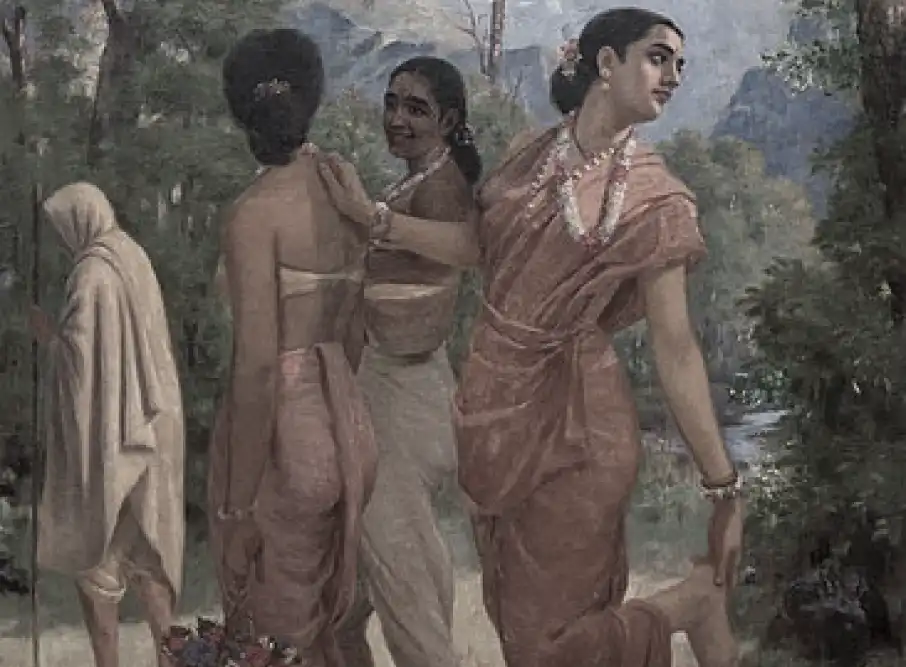
Keywords: Abhigyan Shakuntalam, Dushyanta and Shakuntala, Separation of Dushyanta and Shakuntala, love story of dushyant and shakuntala, abhigyan shakuntalam summary
Table of Contents
The Meeting of King Dushyanta and Shakuntala
During one of his hunting expeditions, King Dushyanta finds himself in the serene environs of Sage Kanva’s hermitage. The hermitage, with its lush greenery and tranquil atmosphere, serves as a stark contrast to the chaos of the hunt. It is here that Dushyanta first lays eyes on Shakuntala, the sage’s adopted daughter. Shakuntala, with her ethereal beauty and grace, immediately captivates the king. Their encounter is marked by an instant and profound attraction between the two.
King Dushyanta, struck by Shakuntala’s elegance, engages in a conversation with her, and they quickly find themselves drawn to one another. Shakuntala, though initially shy, reciprocates the king’s affection. As they spend more time together, their connection deepens, and love begins to blossom. Their shared moments are filled with the promise of a future together, transcending the boundaries of their respective worlds.
In a gesture of his unwavering love and commitment, King Dushyanta gives Shakuntala a ring, an emblematic token of their bond. This ring is not just a promise of love but also a symbol of the king’s intention to return and claim Shakuntala as his queen. The significance of the ring is profound, as it serves as a tangible reminder of their vows to each other, even as fate conspires to test their love.
Their meeting marks the beginning of a poignant love story that is both beautiful and tragic. The king’s departure from the hermitage sets the stage for the trials that Shakuntala will face, with the ring playing a crucial role in the unfolding of their destiny. Through their encounter, the themes of love, memory, and fate are intricately woven into the fabric of the narrative, setting the tone for the events that follow.
The Separation of Dushyanta and Shakuntala and the Curse
The poignant separation of Dushyanta and Shakuntala marks a critical juncture in the narrative of Abhigyan Shakuntalam. This turning point is precipitated by an inadvertent act that draws the ire of Sage Durvasa. Known for his quick temper, Sage Durvasa arrives at the hermitage where Shakuntala resides. Absorbed in thoughts of her beloved Dushyanta, Shakuntala fails to notice the sage and neglects to extend him the customary hospitality. Feeling slighted, Durvasa pronounces a curse that Dushyanta will forget Shakuntala.
The curse manifests as a veil over Dushyanta’s memory, making him oblivious to the love and promises he shared with Shakuntala. This divine retribution plunges Shakuntala into profound sorrow. The once joyous and serene hermitage becomes a place of melancholy as Shakuntala grapples with the weight of the curse. Her companions, too, share in her grief, unable to console her fully.
Determined to restore her love, Shakuntala embarks on a journey to the palace of King Dushyanta, accompanied by her foster father, Sage Kanva. The journey is fraught with emotional turmoil, as Shakuntala clings to the hope that Dushyanta will remember their bond upon seeing her. However, upon her arrival, she is met with a heart-wrenching reality. The king, under the influence of the curse, fails to recognize Shakuntala, leaving her desolate and heartbroken.
Shakuntala’s sorrow is poignantly depicted in her solitary departure from the palace. Bearing the weight of rejection and the loss of her love, she retreats, embodying the tragic essence of the tale. Her journey from the hermitage to the court, and her subsequent departure, encapsulate the profound themes of love, memory, and fate that resonate throughout Abhigyan Shakuntalam. This phase of separation underscores the fragility of human emotions and the enduring quest for love, even amidst seemingly insurmountable obstacles.
The Loss of the Ring
In the epic tale of “Abhigyan Shakuntalam,” the loss of the ring marks a pivotal moment in the narrative, laden with deep symbolism and emotional weight. As Shakuntala embarks on her journey to the king’s palace, the ring symbolizes her love and the promise made by King Dushyanta. The loss of this significant token sets off a series of events that profoundly affect the characters’ destinies.
During her journey, Shakuntala reaches the banks of a river. As she attempts to cross, she is momentarily distracted, and the precious ring slips from her finger. The ring, a tangible symbol of her union with the king, falls into the water and is swiftly swallowed by a fish. This unforeseen mishap leaves Shakuntala in a state of utter despair. The ring was not just a piece of jewelry but her sole proof of the king’s love and their sacred bond.
Shakuntala’s hopelessness is palpable. The realization that the ring is lost plunges her into a deep sense of desolation. Her journey, already fraught with uncertainty, now seems even more daunting as she faces the prospect of meeting the king without the crucial proof of their love. The loss of the ring signifies more than just a physical loss; it reflects the fragile nature of human memory and the challenges of preserving love against the odds.
Her inner turmoil is amplified by the societal and personal implications of losing the ring. Shakuntala grapples with the fear that her love story might not be believed, and that her bond with the king could be dismissed as a mere figment of her imagination. This moment of vulnerability underscores the emotional depth of her character and sets the stage for the profound trials she must endure.
Shakuntala’s Arrival at the Palace
Upon her arrival at King Dushyanta’s palace, Shakuntala was filled with a mixture of hope and apprehension. She anticipated a joyous reunion with the king, who had promised her love and protection. However, the curse cast by Sage Durvasa had taken its toll, and King Dushyanta failed to recognize Shakuntala. This confrontation was marked by confusion and bewilderment as Shakuntala tried to remind him of their sacred bond.
The king’s denial was not born out of malice but rather the curse that clouded his memory. Despite Shakuntala’s earnest attempts to recount their moments together and the token of the ring he had given her, King Dushyanta’s mind remained impervious. Her pleas and the vivid details of their past seemed to fall on deaf ears, leaving her in a state of despair.
Shakuntala’s anguish was palpable. Her heart, once filled with the promise of a loving reunion, was now shattered by the harsh reality of the king’s unrecognition. The palace, which she had envisioned as a place of warmth and acceptance, had turned into a cold and unwelcoming fortress. The pain of being denied by the man she loved and trusted was overwhelming.
In her despondency, Shakuntala decided to leave the palace. With every step she took away from the grandeur of the royal abode, her heart grew heavier. The emotional toll of this rejection was immense, and she departed with a sense of profound loss. Her departure from the palace symbolized not only a physical journey but also an emotional one, as she grappled with the heart-wrenching reality of her situation.
Shakuntala’s departure left a lingering sorrow in the air, a testament to the tragic consequences of the curse and the fragile nature of human memory and love. Her journey away from the palace marked a poignant moment in the narrative of Abhigyan Shakuntalam, encapsulating the themes of love, memory, and the trials of fate.
The Fisherman’s Discovery
The tale of Abhigyan Shakuntalam takes an intriguing turn with the remarkable discovery made by an unsuspecting fisherman. One day, while casting his net into the river, the fisherman felt an unusual resistance. With great effort, he managed to haul up an exceptionally large fish. Overcome with curiosity and excitement about his sizable catch, he promptly began to clean and prepare the fish.
Upon making an incision, the fisherman encountered an astonishing sight—a ring gleaming from within the fish’s stomach. This was no ordinary ring; it was resplendent with intricate designs and bore an aura of significance. The fisherman’s eyes widened with wonder as he carefully extracted the ring, realizing that it was a valuable and possibly royal artifact.
The fisherman, though simple in his ways, understood the gravity of his discovery. He pondered over the possible stories behind the ring, its journey from the hands of royalty to the depths of the river, and now to his own possession. His instincts told him that this ring was more than just a piece of jewelry; it was a key to a larger mystery.
Deciding that such a precious item needed to be in the right hands, the fisherman resolved to take it to the king. He believed that only the monarch could unravel the true significance of the ring and restore it to its rightful place. With this decision, he set off towards the palace, clutching the ring with a mix of pride and apprehension.
The fisherman’s journey to the king was more than a mere act of presenting a found object; it was a pivotal moment that would set in motion the events leading to the eventual reunion of the protagonists, further weaving the intricate fabric of the tale of Abhigyan Shakuntalam.
The King’s Memory Restored
The pivotal moment in the epic tale of Abhigyan Shakuntalam unfolds when a humble fisherman presents a ring to King Dushyanta. Unbeknownst to the fisherman, this ring is the key to unlocking a cascade of forgotten memories. As he stands before the king, the fisherman recounts how he discovered the precious ring inside the belly of a fish, unaware of its significance. Intrigued by the fisherman’s story, King Dushyanta examines the ring closely. The instant his eyes fall upon it, a sudden and overwhelming rush of memories floods his mind.
King Dushyanta is engulfed by vivid recollections of his encounter with Shakuntala, their blossoming love, and the promises they made to each other. The curse that had shrouded his mind in forgetfulness dissipates, revealing the stark reality of his actions. He is struck by the enormity of his oversight and the unintentional betrayal of Shakuntala, who had been left to suffer in isolation.
The realization of his actions dawns heavily upon him. King Dushyanta is filled with remorse and a profound desire to seek out Shakuntala and make amends for his forgetfulness and rejection. The memories of their time together now burn brightly in his mind, propelling him into a state of urgency and determination. He resolves to find Shakuntala, to acknowledge his mistake, and to restore the bond that had been unjustly severed by the curse.
This moment of revelation serves as a turning point in the narrative, highlighting the themes of love, memory, and redemption that are central to the story of Abhigyan Shakuntalam. It underscores the power of love and the profound impact of memory in shaping human relationships, as the king sets out on his quest to reunite with Shakuntala and rectify the wrongs of the past.
Reunion and Conclusion
The tale of Abhigyan Shakuntalam reaches its poignant climax with the long-awaited reunion of Dushyanta and Shakuntala. After enduring numerous trials and tribulations, King Dushyanta’s memory is finally restored, allowing him to recall his love for Shakuntala. Guided by a divine intervention, he sets out in search of her, driven by an overwhelming sense of remorse and longing.
Upon finding Shakuntala, Dushyanta is overcome with emotion. He approaches her with humility and deep regret, fully aware of the pain his actions have caused. Shakuntala, though hurt and wary, listens to his heartfelt pleas for forgiveness. Dushyanta recounts the circumstances that led to his forgetfulness and expresses his unwavering love and commitment to her.
The reunion is both touching and transformative. Shakuntala, moved by Dushyanta’s genuine repentance and the depth of his sorrow, begins to see the sincerity in his words. Their reconciliation is marked by mutual understanding and a rekindling of the love that once bound them so strongly. The restoration of their relationship symbolizes the triumph of love and memory over the forces that sought to separate them.
Their union is celebrated with great joy, not just by them but by those around them who witnessed their journey. The fulfillment of their destiny together underscores the themes of love, memory, and fate that are woven throughout the story. It is a testament to the enduring power of true love, capable of overcoming even the most formidable obstacles.
In this timeless tale, the reunion of Dushyanta and Shakuntala serves as a powerful reminder of the resilience of the human heart. Their story, rich in emotion and moral lessons, continues to resonate with audiences, illustrating that love, guided by memory and destiny, ultimately prevails.
